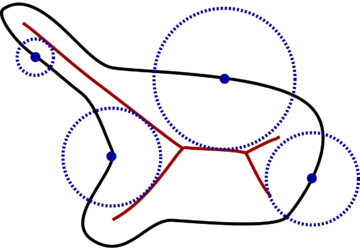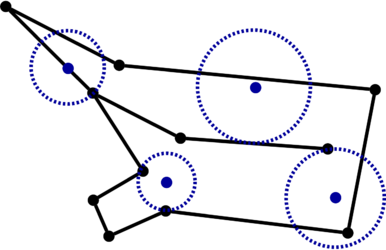Local feature size
From HandWiki
Local feature size refers to several related concepts in computer graphics and computational geometry for measuring the size of a geometric object near a particular point.
- Given a smooth manifold [math]\displaystyle{ M }[/math], the local feature size at any point [math]\displaystyle{ x \in M }[/math] is the distance between [math]\displaystyle{ x }[/math] and the medial axis of [math]\displaystyle{ M }[/math].[1]
- Given a planar straight-line graph, the local feature size at any point [math]\displaystyle{ x }[/math] is the radius of the smallest closed ball centered at [math]\displaystyle{ x }[/math] which intersects any two disjoint features (vertices or edges) of the graph.[2]
See also
- Nearest neighbour function
References
- ↑ Amenta, Nina; Bern, Marshall (1999). "Surface reconstruction by Voronoi filtering". Discrete and Computational Geometry 22 (4): 481–504. doi:10.1007/PL00009475. https://escholarship.org/content/qt4rc7z0d1/qt4rc7z0d1.pdf?t=ptt31s.
- ↑ Ruppert, Jim (1995). "A Delaunay refinement algorithm for quality 2-dimensional mesh generation". Journal of Algorithms 18 (3): 548–585. doi:10.1006/jagm.1995.1021.
 |



